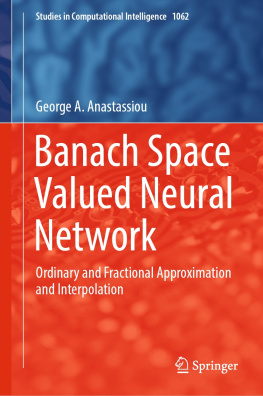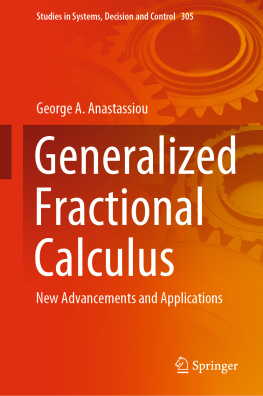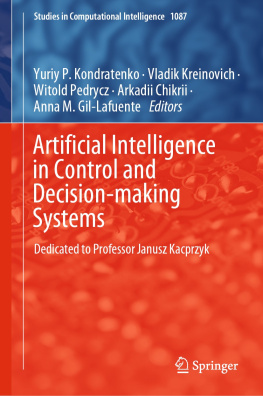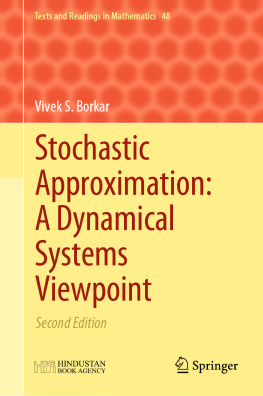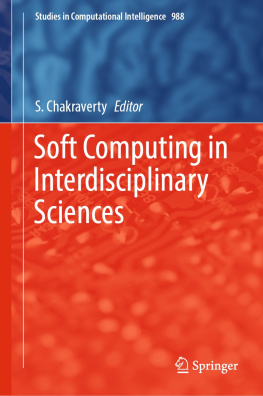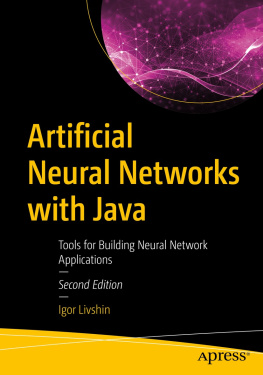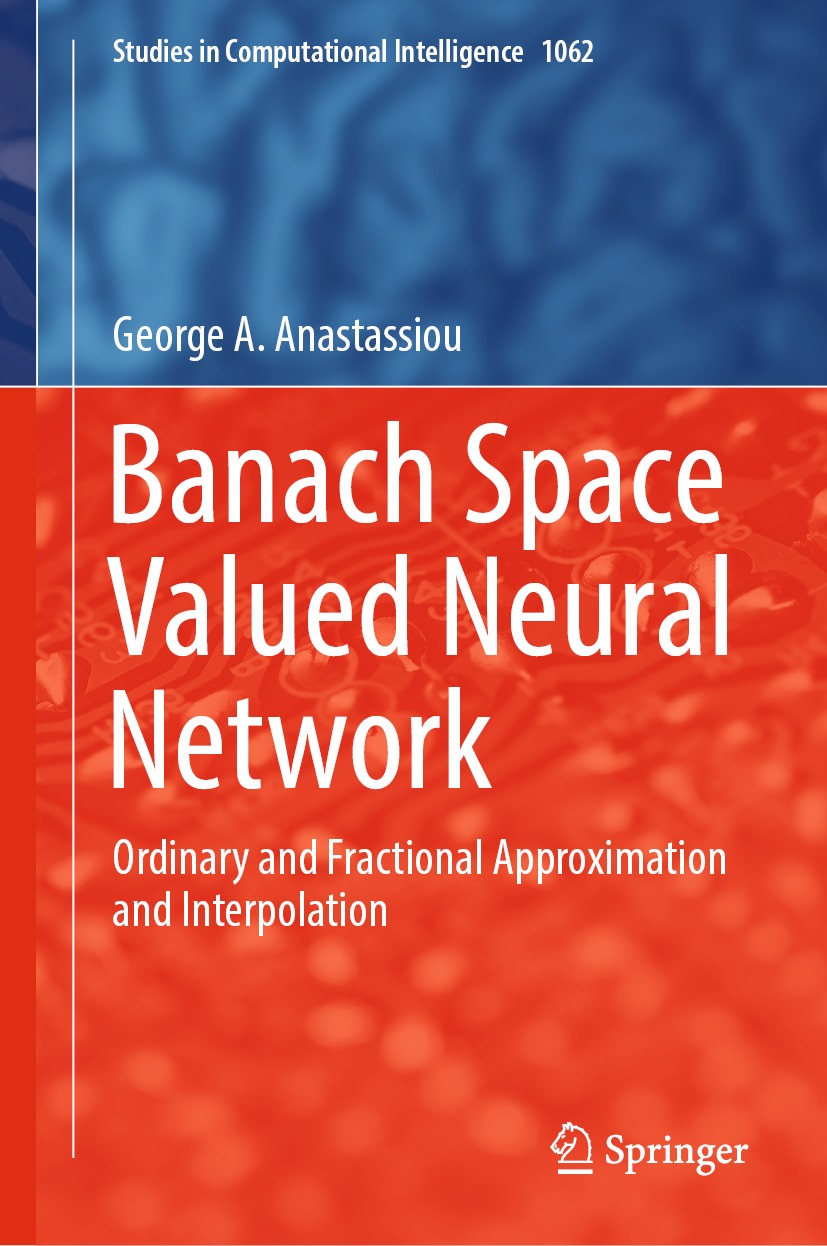Volume 1062
Studies in Computational Intelligence
Series Editor
Janusz Kacprzyk
Polish Academy of Sciences, Warsaw, Poland
The series Studies in Computational Intelligence (SCI) publishes new developments and advances in the various areas of computational intelligencequickly and with a high quality. The intent is to cover the theory, applications, and design methods of computational intelligence, as embedded in the fields of engineering, computer science, physics and life sciences, as well as the methodologies behind them. The series contains monographs, lecture notes and edited volumes in computational intelligence spanning the areas of neural networks, connectionist systems, genetic algorithms, evolutionary computation, artificial intelligence, cellular automata, self-organizing systems, soft computing, fuzzy systems, and hybrid intelligent systems. Of particular value to both the contributors and the readership are the short publication timeframe and the world-wide distribution, which enable both wide and rapid dissemination of research output.
This series also publishes Open Access books. A recent example is the book Swan, Nivel, Kant, Hedges, Atkinson, Steunebrink: The Road to General Intelligence https://link.springer.com/book/10.1007/978-3-031-08020-3
Indexed by SCOPUS, DBLP, WTI Frankfurt eG, zbMATH, SCImago.
All books published in the series are submitted for consideration in Web of Science.
George A. Anastassiou
Banach Space Valued Neural Network
Ordinary and Fractional Approximation and Interpolation

Logo of the publisher
George A. Anastassiou
Department of Mathematical Sciences, University of Memphis, Memphis, TN, USA
ISSN 1860-949X e-ISSN 1860-9503
Studies in Computational Intelligence
ISBN 978-3-031-16399-9 e-ISBN 978-3-031-16400-2
https://doi.org/10.1007/978-3-031-16400-2
The Editor(s) (if applicable) and The Author(s), under exclusive license to Springer Nature Switzerland AG 2023
This work is subject to copyright. All rights are solely and exclusively licensed by the Publisher, whether the whole or part of the material is concerned, specifically the rights of translation, reprinting, reuse of illustrations, recitation, broadcasting, reproduction on microfilms or in any other physical way, and transmission or information storage and retrieval, electronic adaptation, computer software, or by similar or dissimilar methodology now known or hereafter developed.
The use of general descriptive names, registered names, trademarks, service marks, etc. in this publication does not imply, even in the absence of a specific statement, that such names are exempt from the relevant protective laws and regulations and therefore free for general use.
The publisher, the authors, and the editors are safe to assume that the advice and information in this book are believed to be true and accurate at the date of publication. Neither the publisher nor the authors or the editors give a warranty, expressed or implied, with respect to the material contained herein or for any errors or omissions that may have been made. The publisher remains neutral with regard to jurisdictional claims in published maps and institutional affiliations.
This Springer imprint is published by the registered company Springer Nature Switzerland AG
The registered company address is: Gewerbestrasse 11, 6330 Cham, Switzerland
Dedicated to the memory of all of my teachers and mentors
Preface
This monograph is the continuation of authors earlier (i) 2011 monograph, Intelligent Systems: Approximation by Artificial Neural Networks, Springer, Intelligent Systems Reference Library, Volume 19, and (ii) 2016 monograph, Intelligent Systems II: Complete Approximation by Neural Network Operators, Studies in Computational Intelligence, Volume 608.
The innovation here is that the neural networks are Banach space valued, induced by a great variety of activation functions deriving from the arctangent, algebraic, Gudermannian and generalized symmetric sigmoid functions.
Thus, in this monograph, all presented is original work by the author given at a very general level to cover a maximum number of different kinds of neural networks: giving ordinary, fractional, fuzzy and stochastic approximations. We exhibit univariate, fractional and multivariate approximations. Iterated-sequential approximations are also studied. The new and important feature here is that the functions under approximation are Banach space valued.
As a result, this monograph is the natural and expected evolution of recent authors research work put in a book form for the first time. The presented approaches are original, and the chapters are self-contained and can be read independently. This monograph is suitable to be used in related graduate classes and research projects.
The motivation to write this monograph came from the following: various issues related to the modeling and analysis of ordinary and fractional order systems have gained an increased popularity, as witnessed by many books and volumes in Springers program: http://www.springer.com/gp/search?query=fractional&submit=Prze%C5%9Blij and the purpose of our book is to capture at a very general level a deeper formal analysis on some issues that are relevant to many areas, for instance: decision-making, complex processes, systems modeling and control and related areas.
The above are deeply embedded in the fields of mathematics, engineering, computer science, physics, economics, social and life sciences.
Next is listed the authors related recent monographs in fractional analysis and applications:
George Anastassiou, Intelligent Computations: Abstract Fractional Calculus, Inequalities, Approximations, Springer, Studies in Computational Intelligence 734, Heidelberg, New York, 2018.
George Anastassiou, Nonlinearity: Ordinary and Fractional Approximations by Sublinear and Max-product Operators, Springer, Studies in Systems, Decision and Control 147, Heidelberg, New York, 2018.
George Anastassiou, Ordinary and Fractional approximation by non-additive integrals: Choquet, Shilkret and Sugeno integral approximators, Springer, Studies in Systems, Decision and Control 190, Heidelberg, New York, 2019.
George Anastassiou, Intelligent Analysis: Fractional Inequalities and Approximations Expanded, Springer, Studies in Computational Intelligence 886, Heidelberg, New York, 2020.
George Anastassiou, Generalized Fractional Calculus: New Advancements and Applications, Springer, Studies in Systems, Decision and Control 305, Heidelberg, New York, 2021.
George Anastassiou, Constructive Fractional Analysis with Applications, Springer, Studies in Systems, Decision and Control 362, Heidelberg, New York, 2021.
George Anastassiou, Unification of Fractional Calculi with Applications, Springer, Studies in Systems, Decision and Control 398, Heidelberg, New York, 2022.
George Anastassiou, Abstract Fractional Monotone Approximation, Theory and Applications, Studies in Systems, Decision and Control 411, Heidelberg, New York, 2022.

